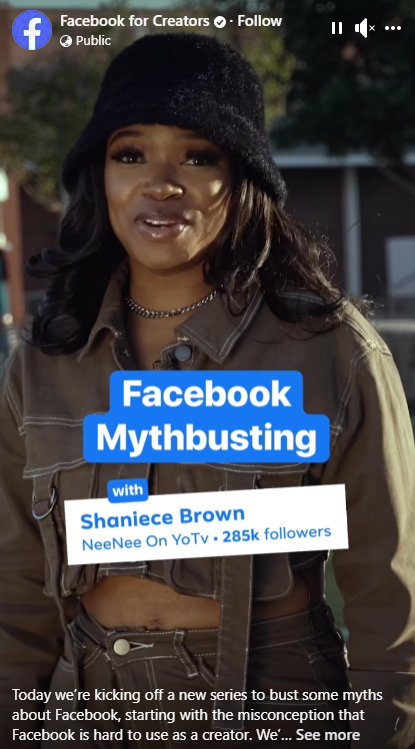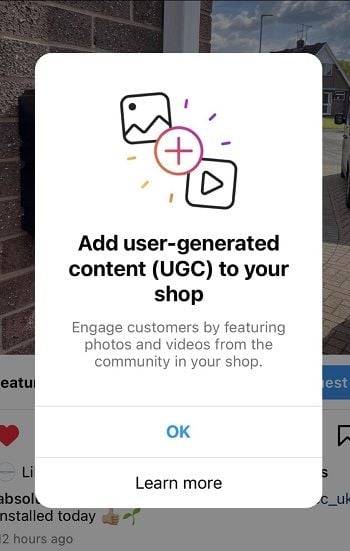Courting creators is back in style, with both Meta and TikTok launching new initiatives to lure top creators and pair them with affiliate marketing opportunities within their respective apps.
At Meta, the platform has launched a new video series that aims to address myths and misconceptions that creators may have about Facebook, and their potential opportunities in the app.

The new series will be presented by a range of creators who’ve been able to achieve success on Facebook, and will provide tips and notes on how to maximize your creator presence in the app.
As per Meta:
“In the first reel of this series, Shaniece Brown, aka ‘NeeNee On YoTV’, shares how using Facebook’s Professional Mode has been helpful to her creator journey, growing her audience to over 285K followers, and how it can be helpful for other creators looking to grow their presence.”
The first video in the series provides a fairly basic overview, but it’s another step in Meta’s push to get more creators posting more often in its apps, by showcasing not only how you can post, but how you can optimize your approach, and ultimately make money, via the ‘creator economy’, which may or may not be a real thing.
At the same time, Instagram has also launched a new prompt to help brands source relevant UGC in the app.

That could provide another way for creators to make money, by opening up more opportunities to get on the radar of brands when they tag them in posts.
Over on TikTok, as reported by Lia Haberman, the platform is currently working with a selected group of creators on a new program that connects brands to influencer content, by enabling participating creators to post videos based on a brand brief.
As per Haberman:
“According to one TikToker who’s part of the Creative Challenge beta program, creators are making up to $34,000 a month by producing UGC for brands like Uber Eats, Zynga, Alibaba and TikTok. In fact, “creators are buying houses with the amount of money they’re making from UGC,” the TikToker told me.”
The initiative provides another way for brands to get better, native TikTok content, while also providing another monetization pathway for top stars in the app.
Which TikTok desperately needs. The results of its Creator Funding programs thus far have been mixed, while it still doesn’t have an equitable ad revenue share program to incentivize users. Facilitating brand deals is likely its best way forward on this front – though limiting the program to selected creators may also lead to issues with scale, and maximizing opportunities.
These projects are the latest in each app’s efforts to ensure creators get paid, in order to keep them posting, while also giving brands a more organic way into the conversation. In short-form video in particular, that’s important, because creating stand-out, engaging video clips is not easy, and users tend to be much more aware of the latest trends and tricks than brands.
With literally seconds of attention work with, the details matter, and enlisting talent that already understands the best tricks and tactics is a far faster, and cheaper, development pipeline than relying on in-house staff.
These new initiatives will provide more opportunity, but will it be enough to keep the majority of users in each app?



